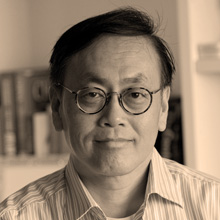Innovation is a critical component of a national power. Countries that develop new products or methods of production are able to generate wealth by producing desirable goods. This creative process often entails the development of new technology, which in turn can form the foundation of further innovation. New technology can also contribute to social well-being, the development of new industries, and improved military capabilities. Examining Chinese innovation, therefore, provides key insights into the country’s expanding international influence.

Charles W. Freeman III
International Principal with Forbes-Tate and directs its international efforts

Edward Tse
Founder and CEO of Gao Feng Advisory Company

Jonathan Woetzel
Senior Partner, McKinsey & Company Global Leader, Cities Special Initiative Director, McKinsey Global Institute
What makes some countries stronger in innovation than others and does China have these qualities?
Woetzel: China’s got what it takes, clearly on the consumer side: big market, very aggressive consumer facing companies, very innovative. It’s also doing well on factory innovation. If you look at other things like engineering and the learning capacity, it’s a little bit more mixed. . . If you look at classic science innovation, clearly China is not yet where it needs to be. Watch
Freeman: It’s become commonplace in the United States to equate innovation with Silicon Valley and I don’t think that’s always fair. There are multiple kinds of innovation and if you look at China’s national innovation goals they aren’t to develop the kind of ecosystem that Silicon Valley represents but they are still trying to have an innovative ecosystem. Watch
Tse: Clearly there are also different types of innovation. Innovation that is driven by technology or technological development and innovation that is driven by … business model changes. Listen
Woetzel: China has the potential to become an innovation powerhouse pretty much across the board, but it will take some changes. Watch
Tse: China has now become the wellspring ground for business innovation. Listen
Freeman: I think in practice a lot of Chinese innovation is quite groundbreaking. It’s just not as groundbreaking as I think a lot of Chinese that want to see: the frontier innovations. Watch
Are most of China’s innovation leaders foreign educated or are they a product of the Chinese education system?
Tse: If you look at this range of entrepreneurs and the different generations of entrepreneurs, by definition the first generation and the second generation of entrepreneurs were primarily if not exclusively locally educated or not educated[.]
Listen
Freeman: I think one of the telling signs is that any really successful Chinese technology venture has at its core Chinese that have been educated in the West. Watch
Woetzel: If we look at the high-tech sectors and scientific institutions, a high percentage of people have had global exposure. … At the same time, they all operate in a Chinese context … There is a large portion of foreign exposure amongst the innovators of China, but by no means can you say that it is a foreign-led or a foreign-driven innovation effort. Watch
Tse: [T]here’s not exactly a very clear pattern whether or not an education outside of China actually is required or is a key ingredient for being successful as an entrepreneur in China. Listen
Do startups in China face more or less regulation than startups elsewhere in Asia or around the world?
Woetzel: In the Chinese context … it’s not so much about regulation, but about the regulatory environment. . . . Because government plays such a leading role in society, what we have is rule by man, not rule by law … Chinese start-ups could benefit from having more business-friendly regulations in place that allow them more access to capital, to allow them to get more defense of their intellectual property, to allow them to perhaps recruit more freely. Watch
Tse: By definition policy and regulation are always behind the times. No government in the world, the Chinese government included, can predict precisely and exactly what new developments are going to happen and therefore come up with policy ahead of time. In that respect I think that the Chinese entrepreneurs have been quite courageous and bold[.] Listen
Freeman: Starting a new technology company … in China is relatively easy, but once you’ve started it having access to things like banking services, or legal services, or the kind of capital services that venture capital provides is a lot harder. The infrastructure for supporting innovations is far underdeveloped[.] Watch
What steps can China take to more effectively promote innovation?
Woetzel: Government actually has a big role to play in setting a standard for what it expects for private enterprises to deliver. Watch
Freeman: If you talk to Chinese entrepreneurs or even Chinese researchers … the most common complaint is the constrictions on their ability to access information, technical or otherwise, that is critical to moving their businesses forward, or moving their research forward. Watch
Woetzel: There are still a lot of sectors in the Chinese economy which are relatively oligopolistic, so you have large state enterprises, you have small groups of companies that control critical resources, and breaking up those monopolies, allowing for competition is a critical prerequisite to getting more innovation into the economy. Watch
Tse: The Chinese government has been very supportive of innovation. The Chinese government have actually made innovation and entrepreneurship a priority for the national strategy going forward. And in fact Premier Li Keqiang has repeatedly said that he wants everybody to be entrepreneurs and everybody to be innovative. Listen




